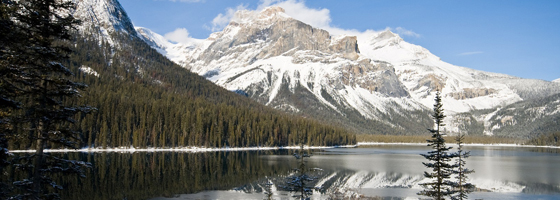Rockies Research: Mountaintop lakes may be environmental sentinels

Stretched across the border between Wyoming and Montana lie the Beartooth Mountains, part of the central U.S. Rockies. Among these are more than 3,000 mountaintop lakes at elevations ranging from 5,000 feet to over 11,000 feet.
These lakes remain frozen for as many as 10 months of the year due to the extreme cold and deep snowpack that develops. Because of the severe climate, these lakes respond strongly to outside pressure.
They are sensitive indicators — sentinels — of both local and larger scale environmental changes. For example, while visitors to the region may remark about the pristine beauty of the lakes, research has demonstrated that nitrogen deposition from cities throughout the western U.S. has been falling on the mountains in snow and rain, slowly enriching the mountaintop lakes with nitrogen.
This gradual nitrogen increase has stimulated greater algae growth and altered the underwater ecosystems in many ways. In nearby Red Lodge, Mont., records of snowfall date back many decades, highlighting dramatic changes the region has experienced. Since 1970, average annual snowfall has decreased from about 250 inches to about 100 inches per year. Such dramatic changes, common throughout the western U.S., affect everything from the prevalence of wildfires to the transparency of the lakes.
Scientists from Miami University of Ohio and the University of Maine are conducting research on a series of alpine and subalpine lakes throughout the Beartooth Mountains. Alpine lakes, lying above the tree line, are often cold and clear.
In order to understand these sensitive ecosystems better, researchers from Miami deployed a data buoy this summer in Heart Lake, a remote alpine lake with an elevation of 10,350 feet located just inside Montana. Heart Lake lies in a small granitic watershed; steep walls shelter water that is deeper than 100 feet.
Despite its beauty, Heart Lake is unusual by alpine lake standards. While most lakes in the region are low in both dissolved organic carbon (DOC) and chlorophyll (an indicator of algal biomass), Heart Lake has unusually high chlorophyll, often as high as 15-20 µg/L. In contrast, the average chlorophyll concentration of many lakes in the region is about 1.5 µg/L. The high concentration in Heart Lake is more commonly found in Midwest agricultural reservoirs than Montana cold-mountain lakes.
Challenging terrain, lack of roads, and thin air meant researchers had to think creatively in order to study Heart Lake. The remoteness of the lake meant all equipment had to be carried in backpacks. Additionally, since the deployment was in a National Forest, the buoy needed to have a low profile.
Working with Fondriest Environmental, graduate students at Miami designed a mobile buoy that was modular and lightweight. For example, anchors were fashioned from sleeping bag stuff sacks filled with shoreline rocks, instead of the more traditional 70-pound pyramid weights. The final buoy weight was 35 pounds (not including sensors). When scientists first visited Heart Lake in early July, several inches of ice remained. Warm summer temperatures, however, quickly melted the ice, and the buoy was deployed. Scientists visited the lake weekly throughout the rest of the summer, collecting manual samples, changing data logger batteries, and calibrating sensors.
Connected to the buoy was a YSI sonde with temperature, conductivity, dissolved oxygen, chlorophyll, and turbidity probe units. Also suspended beneath the buoy was a Turner CDOM sensor (with Zebra-Tech wiper), a Biospherical radiometer sensors measuring transparency to both UV and PAR at two depths, and a temperature string to help understand the lake’s thermal structure. Finally, a topside-mounted Vaisala weather station measured air temperature, wind speed, wind direction, relative humidity, barometric pressure, and rainfall. Sensors were powered and run by a NexSens SDL500 submersible data logger.
The data show that Heart lake changes rapidly once the ice cover melts. For example, the chlorophyll concentration, as estimated from the YSI probe, climbed rapidly from less than 5 µg/L to more than 11 µg/L within a week. It then quickly settled back down to a long period of about 2 µg/L until the buoy was removed in late August.
This suggests that the high chlorophyll concentration may be stimulated by nutrients in the watershed that enter the lake during snowmelt. Other data analyses are still being conducted, but these initial results suggest that alpine lakes exhibit clear signals of broader landscape phenomenon. This sentinel quality makes mountaintop lakes an ideal (and beautiful) place to study environmental processes and changes.

— Kevin Rose is a PhD candidate in the Department of Zoology at Miami University working with Dr. Craig Williamson. Kevin’s research focuses on understanding optical indicators of allochthony and carbon cycling in aquatic ecosystems.




Pingback: Research Brief: Monitoring Climate Change Using Lakes as Sentinels - Lake Scientist